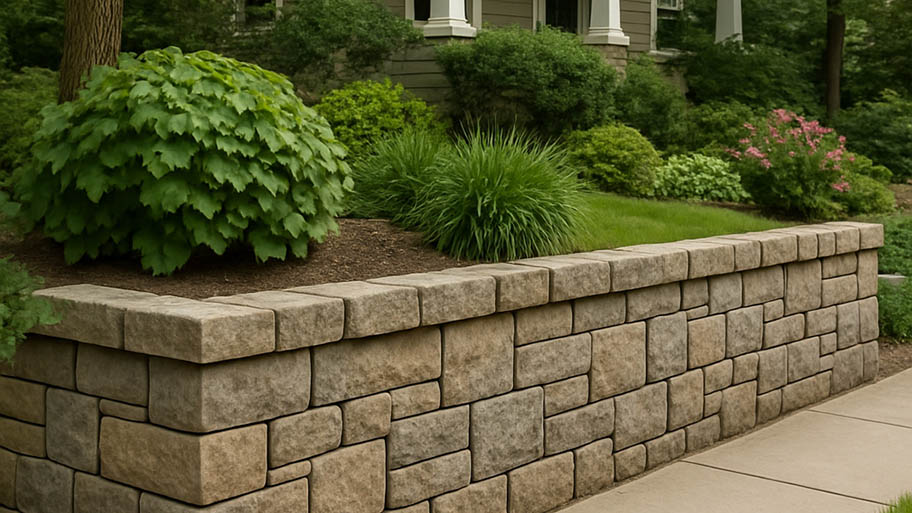
Kick erosion to the curb with an eye-catching retaining wall. Retaining wall costs vary based on the material, but this guide will help you budget.
These guidelines will ensure you don’t get caught off base
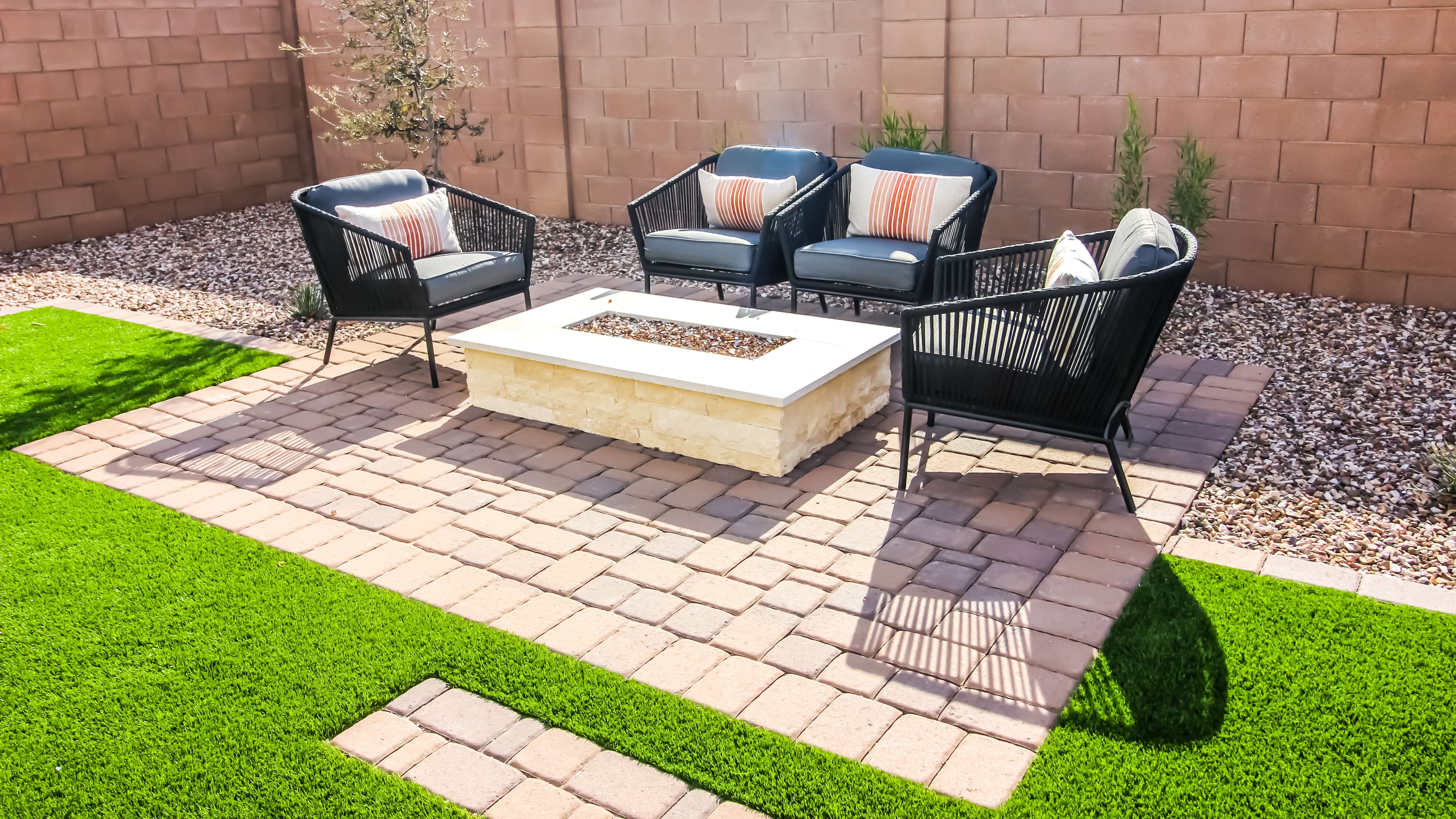

Paver base is made of a base layer of gravel and a top layer of sand.
To calculate how much paver base you need, measure the length and width of your project area. You’ll also need to determine how deep the paver base should be.
The depth of your paver base will depend on traffic and soil conditions. Most patios are between 4 and 6 inches deep.
Whether you’re putting in a patio or a walkway, it’s essential that you know how much paver base you’ll need to properly support the pavers. Use the following tables and formulas to calculate exactly how much paver base you’ll need for your project.
Use the following table to estimate the amount of paver base you’ll need based on the size of your patio.
| Patio Size (Feet) | Paver Depth (Inches) | Base Needed (Cubic Yards) |
|---|---|---|
| 7x7 | 4 | 0.6 |
| 7x7 | 6 | 0.9 |
| 7x7 | 8 | 1.2 |
| 7x7 | 12 | 1.8 |
| 12x14 | 4 | 2.1 |
| 12x14 | 6 | 3.1 |
| 12x14 | 8 | 4.1 |
| 12x14 | 12 | 6.2 |
| 16x18 | 4 | 3.6 |
| 16x18 | 6 | 5.3 |
| 16x18 | 8 | 7.1 |
| 16x18 | 12 | 10.7 |
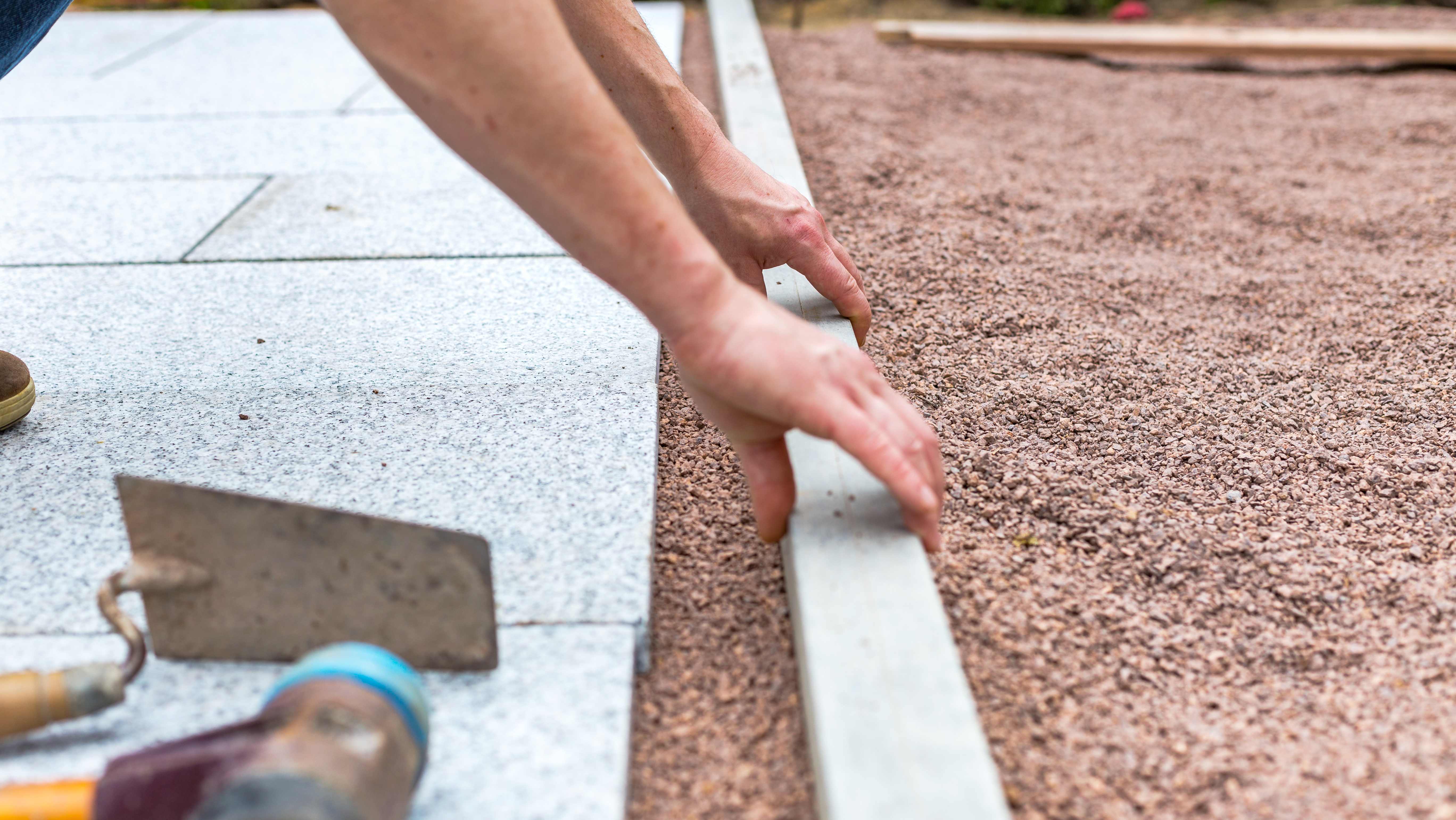
A proper paver base actually consists of two layers: a thick layer of gravel and a thin layer of sand. The gravel will go between the ground and the sand, and the sand is the layer in which the pavers will rest. To calculate the amount of paver base you need, you first need to know the depth of the base. For patios and pedestrian walkways, you can stick to between 4 and 6 inches. For driveways, you’ll have to go with 8 to 12 inches. The sand layer should be about one third of the gravel layer.
Base paver material is calculated in cubic yards, so you’ll have to do some calculations to get the correct number.
First, start by measuring the length and width of your paver project in inches and multiply those values together to get the area in square inches:
Paver base area (square inches) = length (inches) x width (inches)
Then determine the volume in cubic inches by multiplying the area by the desired depth:
Paver base volume (cubic inches) = Paver base area (square inches) x desired depth (inches)
Then you’ll take the paver base volume in cubic inches and divide it by 46,656 to determine the cubic yards, which will be the amount of base you’ll need to purchase.
Amount of base (cubic yards) = Paver base volume (cubic inches) / 46,656
While you can measure for materials yourself fairly easily, the actual installation requires equipment to excavate the area, compact the ground below the base, and spread the gravel and sand base on the paver area. Many homeowners opt to hire paver installation contractors for their hardscape projects to ensure high-quality, long-lasting results.
From average costs to expert advice, get all the answers you need to get your job done.

Kick erosion to the curb with an eye-catching retaining wall. Retaining wall costs vary based on the material, but this guide will help you budget.

The cost of stone steps can vary considerably depending on the material you choose and how much labor is required. This guide shows you the cost of popular stone steps and all the extra fees you need to consider when tackling this project.
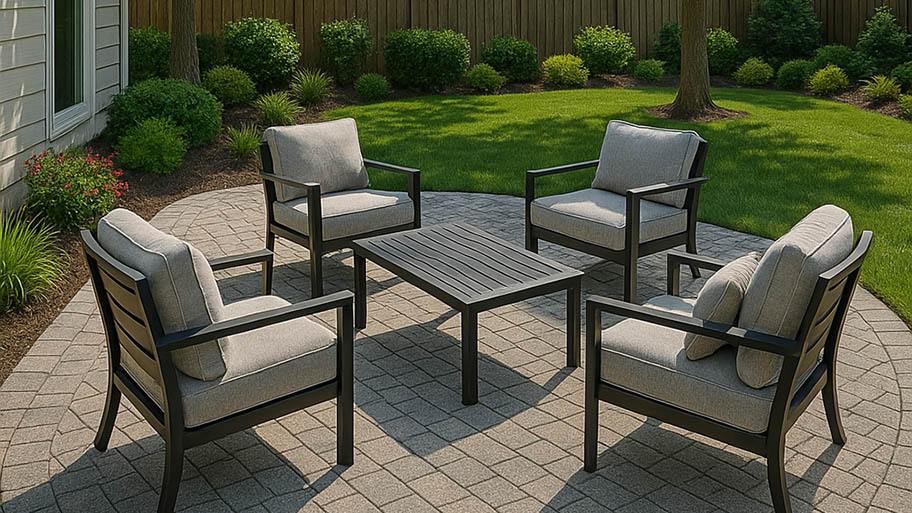
Looking to elevate your backyard aesthetic with a patio? Use this paver patio cost guide to help you estimate your total project cost before you get started.

If you're looking for an effective solution to prevent soil erosion and create usable spaces on sloped terrains, it's time to learn: what is a retaining wall?
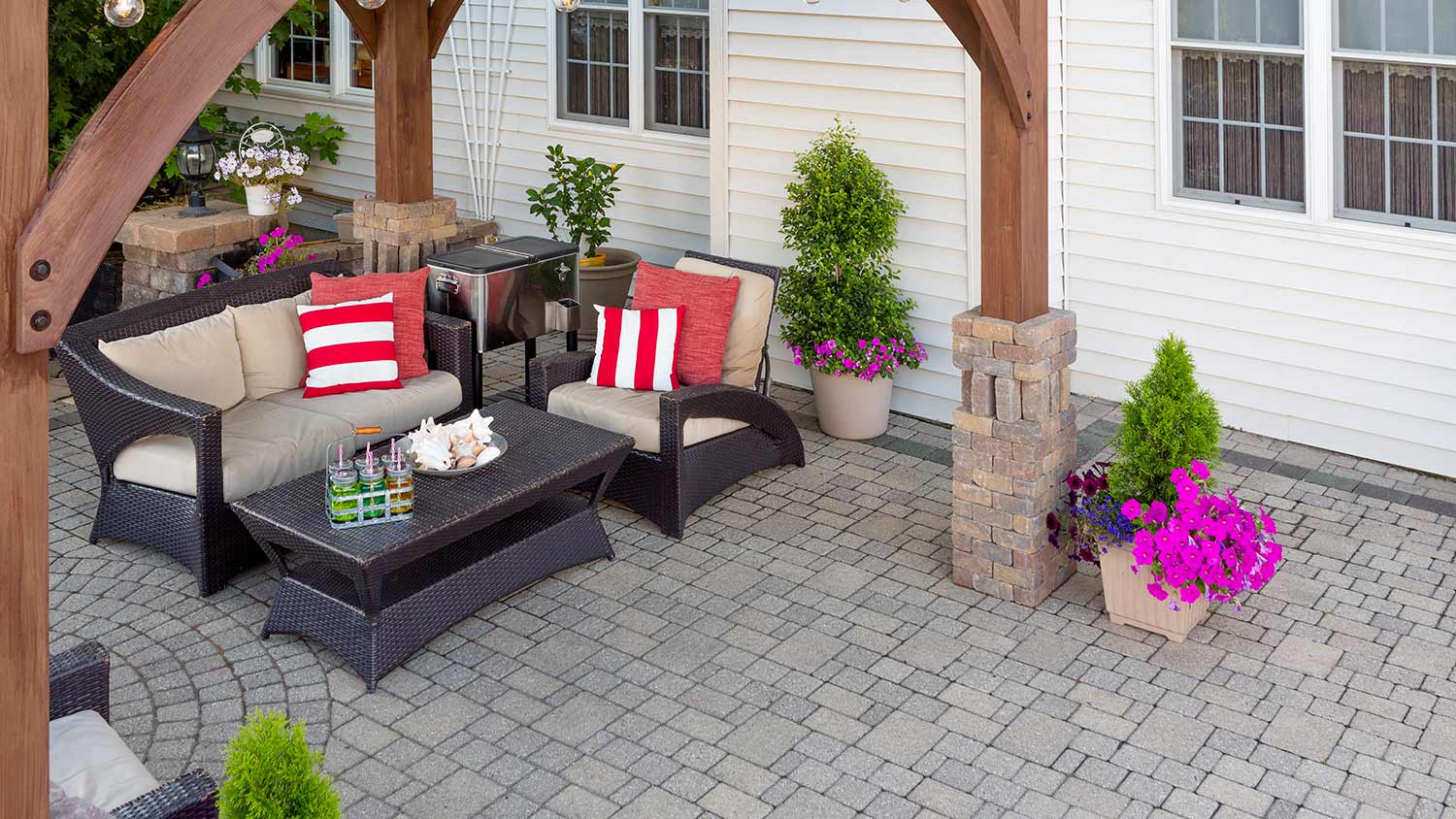
Discover travertine pavers costs to learn about installation, materials, and labor prices, plus tips to save on your travertine paver project.

Paver maintenance may not be top of mind when you’re outside enjoying your patio or driveway. But if you want to keep your outdoor space looking fresh and updated, you should follow our tips and learn how to maintain your pavers.